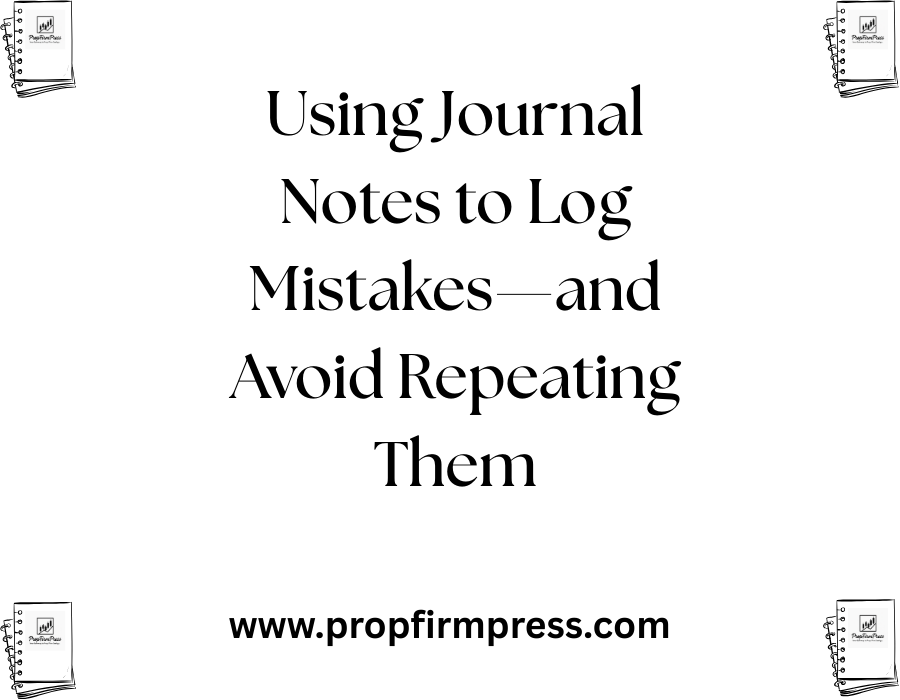Using Journal Notes to Log Mistakes—and Avoid Repeating Them (2)
Maintaining a journal dedicated to logging mistakes is an essential habit for self-improvement, especially in fields that demand consistent reflection and learning. By recording errors thoughtfully, you create a valuable resource that guides you to identify patterns, understand root causes, and develop effective strategies to avoid repeating the same missteps.
Many people overlook the power of reflective journaling, assuming that simply making mistakes and moving on is sufficient for growth. However, failing to consciously analyze and document these experiences often leads to repeated errors and missed opportunities for improvement. This continuation article will explore practical methods for using journal notes to log mistakes, turn those lessons into productive habits, and ultimately enhance personal and professional development.
The Importance of Detailed Mistake Logging
When logging mistakes in a journal, the level of detail profoundly impacts your ability to learn from them. Vague entries such as “Made a bad decision” offer little insight. Instead, journaling should focus on specific circumstances, emotions, thought processes, and external factors contributing to the error.
For instance, note down what you were trying to achieve, the expectations you held at the time, and any external pressures or distractions involved. Additionally, capturing your emotional state—such as anxiety, overconfidence, or fatigue—can reveal hidden triggers for mistakes.
This comprehensive approach creates a nuanced understanding that allows you to dissect each error accurately, making it easier to devise personalized solutions rather than generic advice.
Creating a Consistent Logging Routine
Developing a habit of logging mistakes consistently is crucial for gaining maximum benefit from a journal. Set aside a specific time each day or week to review recent events and write about any errors or misjudgments encountered. This routine turns reflection into a non-negotiable part of your growth process.
Using prompts can assist in structuring each entry. For example:
- What happened?
- What was my role?
- What could I have done differently?
- What will I do next time?
These questions encourage critical thinking and help break down the event into actionable insights. The more consistent your practice, the more habit-forming and effective journaling becomes.
Identifying Patterns Through Regular Review
Journal notes can accumulate quickly, providing a rich archive to analyze over time. Set intervals—such as monthly or quarterly—to review past entries and identify recurring themes or patterns. Are certain mistakes happening under specific conditions? Do the same emotional states trigger lapses? Are there decision-making pitfalls that repeat?
Recognizing these patterns is key to breaking negative cycles. Once identified, you can focus on targeted interventions such as developing new strategies, seeking guidance from mentors, or adopting stress management techniques.
This process transforms the journal from a passive log into an active tool for continuous improvement.
Turning Mistake Analysis Into Habit Building
Logging mistakes is only as valuable as the action taken afterward. To avoid repeating errors, it’s important to use insights from your journal to build new habits. Begin by setting clear goals based on your reflections. For example, if procrastination leads to errors, commit to a daily time management practice documented in your journal.
Reinforce these new habits through consistent journaling that tracks progress and obstacles. Celebrate small wins to maintain motivation and adjust approaches as necessary. This dynamic approach keeps you accountable and steadily moves toward error reduction.
Incorporating Visualization and Affirmations
Alongside logging mistakes, incorporating visualization and positive affirmations into your journal practice can further support habit building and error avoidance. Visualize how you would handle challenging situations differently, focusing on successful outcomes free from past mistakes.
Include affirmations that reinforce confidence, self-compassion, and commitment to growth. For example, journal entries might feature phrases like “I learn from every mistake” or “I am developing stronger decision-making skills.” These additions condition your mindset toward resilience and proactivity.
Leveraging Technology to Enhance Journaling
Modern tools can improve the journaling experience, making mistake logging more accessible and efficient. Digital apps allow you to tag entries, search for specific themes, and set reminders for review sessions. Some apps even include prompts or guided journaling paths tailored to reflection and habit-building.
Whether you prefer a physical notebook or digital platform, choosing the right tool supports consistency and long-term use. Experiment with different methods to find what best fits your lifestyle and preferences.
Sharing Your Learnings for Accountability
While journaling is a private endeavor, sharing select insights with a trusted mentor, coach, or peer group can increase accountability and deepen learning. Discussing your mistakes and reflections invites external perspectives and guidance you might not achieve alone.
This social aspect complements your personal journal by providing encouragement and constructive feedback, further reinforcing positive changes and habit adoption.
Understanding the Role of Self-Compassion in Mistake Journaling
Logging mistakes with a compassionate tone makes the practice more sustainable and psychologically healthy. Harsh self-criticism can create resistance and discourage honesty in your entries, whereas a balanced, forgiving approach fosters openness and continuous learning.
Use your journal as a safe space to acknowledge imperfection without judgment. Treat each mistake as a stepping stone rather than a failure, which shifts your mindset toward growth rather than fear of error.
Adapting Your Approach Over Time
The process of using journal notes to log mistakes is not static. As you evolve, regularly reassess your journaling techniques, prompts, and focus areas. Adjust the depth of detail, frequency of reviews, and integration with habit tracking to suit your changing needs.
This flexibility ensures that journaling remains a relevant and effective tool throughout different phases of personal or professional development.
Ultimately, the consistent and thoughtful use of a mistake journal enables a dynamic feedback loop that accelerates learning and reduces the likelihood of repeating errors. By committing to this reflective habit, you nurture the conditions for lasting growth, resilience, and success.
